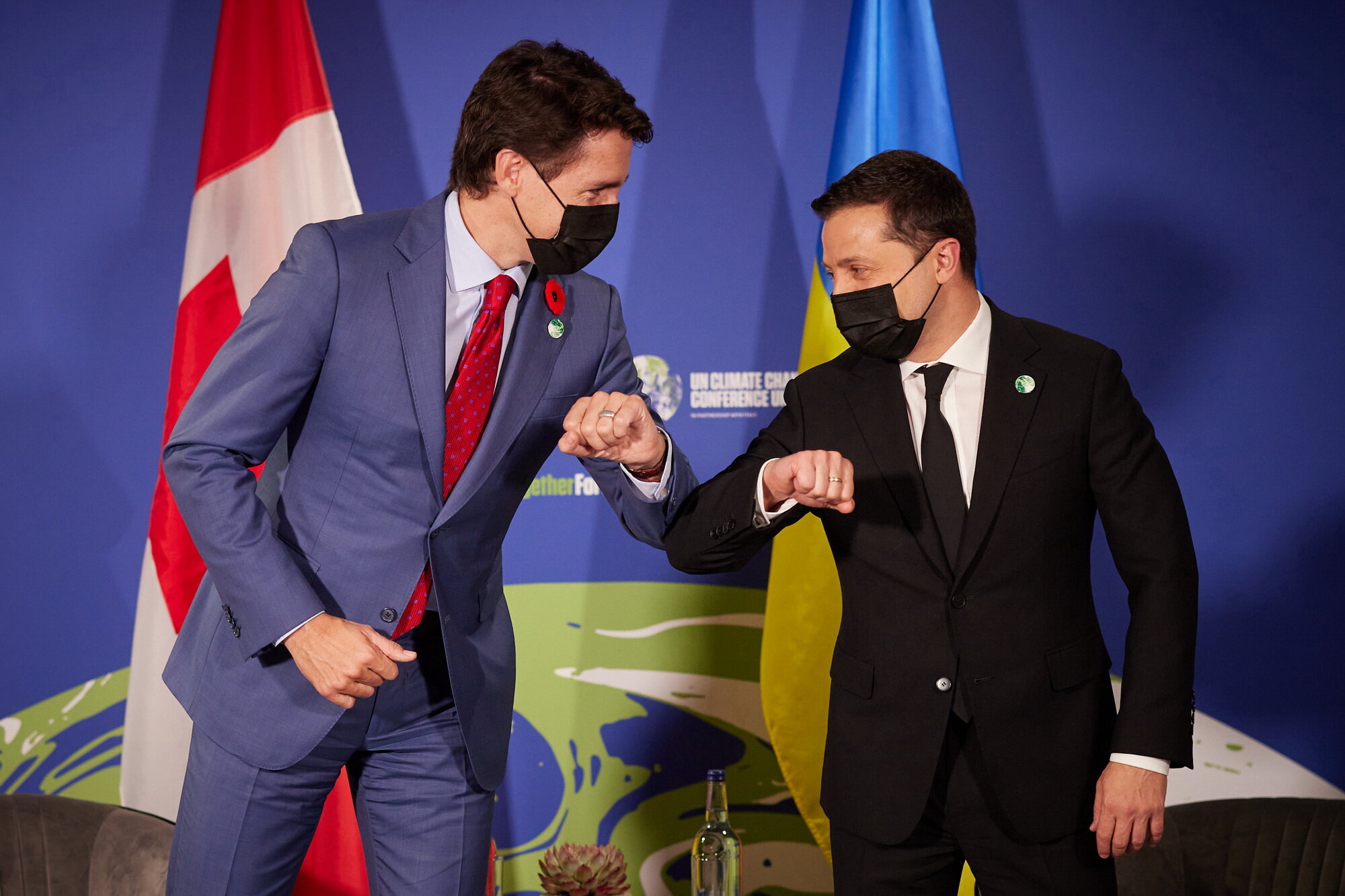With the United Nations Climate Summit (COP26) in Glasgow not living up to the hype, President Volodymyr Zelensky used his two-day visit to the U.K. to rally international attention to the challenges that Ukraine faces amid the ongoing Russian invasion.
The Climate Summit welcomed over 120 world leaders on Nov. 1-2, to jointly combat global warming and reduce the emission of greenhouse gases, primarily carbon dioxide and methane. With little achieved during the summit, Ukrainian attention shifted to the summit’s sidelines.
The European natural gas crisis, the Russian military buildup near Ukrainian borders and the crippling ecological and humanitarian catastrophe in Russian-occupied Crimea and eastern Donbas were the key topics during Zelensky’s talks with leaders of the U.K., Canada, Germany and the U.S.
“Crimea became a Russian military base and the occupied parts of Donetsk and Luhansk oblasts witnessed the flooding of coalmines, erosion of fertile soil and the lack of drinking water,” said Zelensky in his Nov. 1 address to COP26 delegates.
“(Because of the Russian invasion), the planet has received two eco-bombs in the center of Europe – Crimea and parts of our Donbas,” Zelensky said.
In late November 2017, the Organization for Security and Cooperation in Europe (OSCE) presented a report saying that up to 36 decommissioned coal mines in the occupied Donbas were not being properly maintained, and were threatened with flooding and collapse.
According to OSCE experts, further collapses and flooding of mines could cause massive releases of chemicals into groundwater and contaminate the region’s largest rivers – Kalmius, Kalchik, and Siverskiy Donets.
Russian squeeze
Zelensky had a lot on his plate during the Glasgow visit.
Over the past month, a new Russian military buildup was recorded on Ukrainian borders by western satellite imagery. Russia also decreased the amount of natural gas transported through Ukraine, keeping the gas prices high, and substantially lowered coal exports to Ukraine paving the way for a potential energy shortage in Ukraine.
Satellite images published by Politico on Nov. 1, showed a buildup of armored units, tanks and self-propelled artillery near the Ukrainian border. According to Ukraine’s Defense Ministry, over 90,000 Russian troops are now stationed near Ukraine.
Ukrainian officials’ brushoff reports of an actual “buildup,” citing that in April, Russia stationed over 110,000 soldiers within striking distance of Ukrainian positions.
“Show pictures of the situation that was there a month ago, two weeks ago – you will see the same pictures,” said Oleksiy Danilov, secretary of Ukraine’s National Security and Defense Council.
But starting from November, Russia stopped anthracite coal exports to Ukraine. Over the first three quarters of 2021, Russia exported over 10 million tons of coal to Ukraine, a third of the country’s total consumption. Russia continues to occupy Ukraine’s coal-rich eastern Donbas, forcing Ukraine to import the product from Russia.
The squeeze came during the ongoing European energy crisis caused by high gas prices. In October, European gas prices spiked to more than $1,200 per 1,000 cubic meters, a record-breaking number, slightly decreasing since then.
The gas crisis was among the key issues discussed between Zelensky and German Chancellor Angela Merkel on Nov. 1. The face-to-face meeting with the outgoing chancellor focused on the energy situation in Ukraine.
Germany has been a key backer of the $11 billion Nord Stream 2 gas pipeline completed this year. The pipeline allows Russia to bypass Ukraine when transporting gas to the European Union, depriving Ukraine of billions in transportation fees and forcing Ukraine to lose the last deterrent prior to a potential Russian political, economical or military attack.
Nord Stream 2 and the looming energy crisis was also the key issue discussed with Canadian Prime Minister Justin Trudeau.

President Volodymyr Zelensky greets Canadian Prime Minister Justin Trudeau before their face-to-face meeting during the United Nations Climate Summit in Glasgow on Nov. 1. (Ukrainian president press servic)
Zelensky had a brief meeting with U.S. President Joe Biden on Nov. 1, which, according to Zelensky’s spokesman Sergii Nykyforov, focused on energy and the situation in the Donbas.
71 Ukrainian soldiers stationed in Donbas were killed by Russian-led militants in 2021. The latest casualty came on Nov. 2. On the same day, Zelensky held a face-to-face meeting with Secretary of State Antony Blinken to talk about security and defense.
“The main topic was the situation in the Donbas and what we, together with our partners, can do to stop Russia,” said Foreign Minister Dmytro Kuleba after the meeting.
The talks with Blinken forced Zelensky to miss the COP26 panel on methane where Ukraine was to join over 90 countries in a daring attempt to cut the emission of methane by 30% by 2030.
Repeating past assurances, Blinken’s spokesperson said the U.S. Secretary of State in talks with Zelensky “reaffirmed the United States’ unwavering support for Ukraine’s sovereignty, independence, and territorial integrity.”
“(Blinken) welcomed Ukraine’s steps to address corruption and underscored that, together with our allies and partners, the United States would continue to reinforce Ukrainian energy security, including by reducing the risks posed by the Nord Stream 2 pipeline,” Ned Price, the U.S. Secretary of State’s spokesperson, said in a statement.
